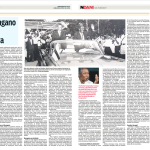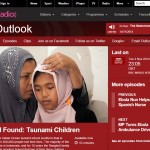Ten months after publishing “Africa [Debt] Rising”, ARI’s Paul Adams revisits Africa’s bond markets.
There is a new catchphrase for Africa’s economy: “facing headwinds”.
Export commodity prices, local currencies and GDP growth rates have fallen sharply in 2015 as China’s economy slows down. The continent’s growth will decelerate to 3.7% this year, down from 4.6% in 2014, the World Bank forecasts, while inflation is averaging 6.9%. Terms of trade are expected to deteriorate by about 18% across the continent – and up to 40% in oil exporting countries. Inflation, current account deficits, government debt and budget deficits are rising fast, in some cases to worrisome levels.
The commodities boom and debt relief that boosted the region for a decade are over, leaving much of Africa still over-reliant on natural resources, lacking the infrastructure to sustain high growth and the administration needed to raise tax and control spending. While debt levels continue to rise, the momentum of growth is swinging back to big developed economies.
Credit ratings agency Fitch says Africa’s average sovereign debt has risen to 44 per cent of GDP from 34 per cent five years ago. This is still a modest level of borrowing by international standards, but tax collection in Africa is generally low outside South Africa and narrowly based, forcing governments to continue borrowing to achieve increasingly ambitious development goals. Debt service to revenue is the crucial indicator. In Zambia, for example, this has rapidly tripled to 15%, meaning that the government has to borrow even more in order to service its debts and pay salaries.
Recourse to local debt markets is expensive. In Ghana, the government is paying interest on local bonds averaging 25% (and rising). In Kenya, a beneficiary of lower oil prices but embarking on a phase of massive state spending on infrastructure, local bonds also yield more than 20% after the steep and sudden rise in the country’s debt to more than 50% of GDP.
For all but a few, the door is closing on foreign credit at single-digit interest rates, less than a year after Eurobond issuance in Africa reached a record US$14 billion. Angola recently abandoned an attempt to float a new issue and Ghana was only able to launch its fourth dollar sovereign bond by paying an interest rate over 10% and, crucially, offering a 40% guarantee from the World Bank. Since Ghana discovered oil and international bond markets, its public debt has almost reached the “distressed” level at over 70% of GDP.
View from the markets
Until last year, international investors were so eager for better yields in new markets that they subscribed to African bonds with little interest in whether their money would be used to build infrastructure or pump up the money supply. Things have changed. “The markets are wondering whether governments have the ability to put the bond proceeds to good use”, Peter Sullivan, Citi’s head of public sector for Africa, told the International Financing Review – Africa Capital Markets conference in London this month.
At the same conference, Ade Adebajo of UBS Investment Bank articulated the consequences in the marketplace. “Sovereign borrowers were encouraged to take advantage of the demand for emerging market debt. They were told: ‘Don’t wait till you need the cash, take it now while it’s available [at low interest rates].’ Now sovereigns such as Ghana are in distress, they are borrowing what they need and bond issue terms are evolving.”
In similar vein, a bond dealer in London told ARI that “the secondary market in African debt [where investors trade bonds] is moving fast into negative territory. African governments’ reputation is no longer good.” He added, “some of it is not their fault – look what’s happened to Glencore. But the promised diversification of their economies and saving money when times were good – these things didn’t happen. Many countries lack a professional central bank. Most of all you want stable management of foreign exchange and the economy.”
Bond markets still base their country ratings as much on absence of bad news as on rational assessment, the dealer observed, rating Ethiopia higher than Kenya despite a lack of understanding in the market of the Ethiopian economy and Kenya’s steady record with foreign investors.
Realities dawn
“There was a fiscal blowout in Africa from 2010 to 2015,” David Cowan, Citi’s Africa economist, told ARI. “IMF warnings were not heeded, partly through optimism based on revenue growth that couldn’t be kept going. Then governments lost control of their wages and their fiscal positions”.
According to Cowan, “there are only two choices now: cut spending, or raise taxes. With revenue collection rates averaging around 12%, funding development projects may have to be done in other ways.” This will involve a major reality check for many governments. “The rise in rates on Eurobonds and domestic bonds is going to focus governments’ minds on fiscal policy,” says Cowan. “Borrowing costs are rising sharply relative to budgets. I think we’ll see a big switch in borrowing policy away from budget lending to infrastructure. The difficulty is finding bankable projects.”
Razia Khan, Standard Chartered’s chief economist for Africa, has a similar view about government spending. “There is an assumption that fiscal and monetary policy in Africa are much improved, sound,” she says. “That may have been true 10 years ago but it’s not true now. Government spending has risen to levels that aren’t sustainable, although some of this spending has been on infrastructure.”
With petrodollars and Eurobond investors vanishing, a period of IMF-led fiscal conservatism, and possibly contraction, appears likely in Africa, especially as sovereign bond repayments become due. This will require a subtle shift in the IMF and World Bank’s role, from giving friendly advice to imposing fiscal discipline. This could pose a severe risk to governments seeking re-election.
Ghana is clearly the first “test case”, as it has been before. With African default risk perceived to be rising, its latest Eurobond, US$1 billion issued in early October, has a 15 year maturity and will be repaid in instalments. The partial guarantee provided by the World Bank increases its power and that of the IMF, which is overseeing a bailout package in return for fiscal reform, to rein in spending by the government as it prepares for a tough election campaign in 2016. The Zambian government is likely to find itself in a similar position.
International bank economists describe the continent’s slowdown as modest, not severe; and the outlook is, of course, differentiated. South Africa and Nigeria, which make up half of Africa’s GDP, are certainly slowing. Public finances are in some disarray in Ghana and Zambia (where the kwacha is Africa’s worst performing currency, down 47% this year), exacerbated by acute energy crises. Low oil and gas prices have opened up big deficits in the Republic of Congo and Equatorial Guinea, although as members of the CFA franc zone their currency is protected by the peg to the euro. Elsewhere, there are “winners”. Côte d’Ivoire is West Africa’s star performer, sustaining 7% GDP growth, driven by services industries and agriculture. Rwanda, Tanzania, Mozambique and Ethiopia are growing at similar – or even higher – rates.
As the chair of the IFR-Africa Capital Markets conference pointed out, the outlook – even for lenders – is not universally bleak.












